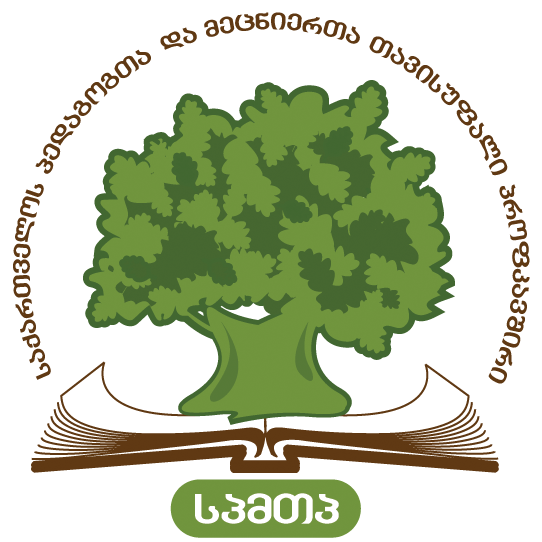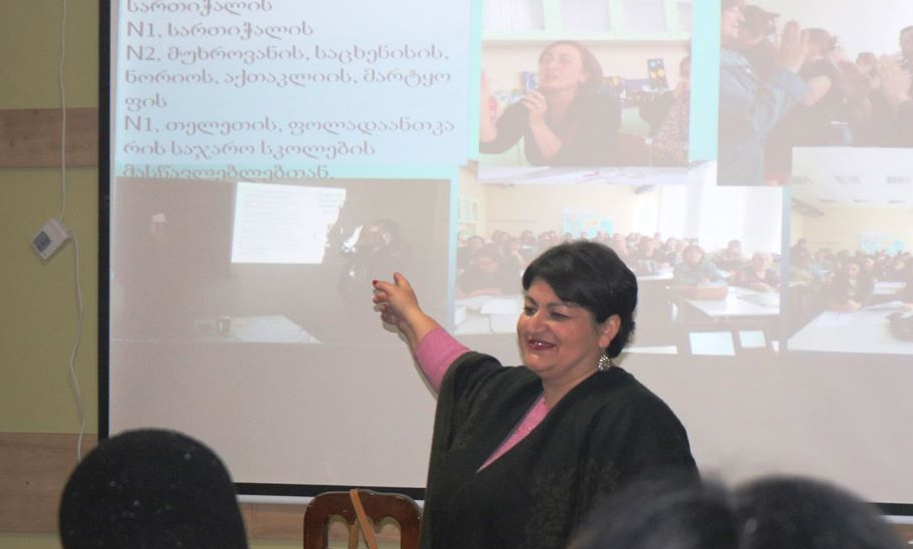The article "Flyum’s Two Models - an Interesting Way to Improve Your Writing Skills" written by Tsaro Khardziani, a Georgian language and literature teacher at Lemshveniera public school, Gardabani municipality, was published in the January 23-29, 2020 issue of the Cultural-Educational Newspaper “New Education.”
The ESFTUG expresses its gratitude to Gulnazi Chelidze, the principal of Lemshveniera public school and Tsaro Khardziani for initiating and preparing the article.
It is noteworthy that after taking part in the Danish-Georgian project of ESFTUG, they did more than successfully introduce the methodology that promotes modern requirements in their own school. They also shared the experience and knowledge gained at the seminar “Written-Summative Assignments and Formative Assessment” with the teachers of various schools in Gardabani Municipality with the support of Lili Tsurtsumia, the chairperson of the ESFTUG Gardabani County Organization.
The article published in the newspaper New Education is about one of the methodologies that Danishexpert teachers shared with their Georgian colleagues and is being implemented in Georgian schools.
See excerpt from the article below.
In the classroom we often hear phrases like: 'Our students have hard time writing'; "It's hard to get all students interested and involved in the lesson, especially if the class is large;" “Most students achieve a better results in oral communication than in written "... This and many other similar phrases actually match with the results of PISA studies. As we know, PISA is an international survey that examines the readiness of 15-year-olds to cope with the daily challenges using the knowledge and skills they have acquired in school. 15 years is the age when students have almost completed a compulsory education course.
The purpose of PISA is not to test how well students have mastered the school program, but to investigate how well they are prepared for active and full involvement in public life.
According to Naec.ge, 5,572 students and 326 schools in Georgia participated in this study.
I participated in an interesting Danish-Georgian project two months ago. Within the framework of the Danish-Georgian Support and Partnership project "Education Advocacy and School Development Promotion with the Educators and Scientists Free Trade Union of Georgia", we got acquainted with the experience of our Danish colleagues, several interactive teaching methods, including two interesting writing models. They can be used in all subjects, on all topics, at the same time it is easy to combine these models with other writing exercises and, most importantly, they improve the writing culture;
These methods made it possible to activate even the students who had given up on writing essays and analysis of the topics; in the observation process, we asked the teachers to note how these methods would work and we got some pretty interesting feedback. The following positive sides of the methods were unanimously noted by all: A seemingly simple task can easily lure the students, make it possible to thoroughly analyze the topic, and use these writing models in the first and second phases of the lesson;
☑️The first model is called the Flyum’s 5 Corners, which is used in all subjects and all types of written assignments. I should also mention that we tried to use this model in all subjects and got excellent results from elementary level to upper secondary. Students note that it has become easier to write, to read and analyze key information, they have learned how to formulate their position and support it with arguments;
☑️The second model is called Flyum’s 7 Corners and is used for academic writing when we want to assess students' thinking skills according to Bloom's taxonomy.
Using these two methods systematically, you will soon see the result: Your students will not be "scared" of written assignments, they will become more confident and gradually they will be able to do a large amount of work without any problems. And most importantly, they will think! The more often we enable students to complete tasks based on thinking and collaboration, the more we will help them develop the skills necessary for the 21st century.



